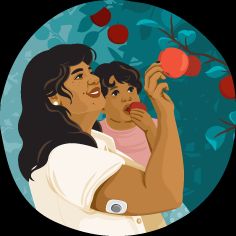Some of the early signs of chronic obstructive pulmonary disease (COPD) are an ongoing cough, increased mucus, and fatigue. Recognizing these symptoms is important to know whether you need to see a doctor and get tested.
Chronic obstructive pulmonary disease (COPD) is a chronic lung condition that obstructs your airways, making it difficult to breathe. COPD worsens over time and can be life threatening without treatment.
More than 11.7 million Americans have been diagnosed with COPD, according to the American Lung Association. But it’s not always easy to tell whether you have it. Some of the symptoms of COPD are similar to those of other conditions. When symptoms first occur, some people ignore them, thinking they’re related to something less serious.
Current or former smokers or people who’ve had frequent exposure to other irritants are at risk for developing COPD. These irritants can include:
- secondhand smoke
- air pollution
- workplace fumes
- sawdust or other aerosolized particles
Your doctor will give you a physical exam and order tests to determine whether you have COPD.
The tests include lung function tests to measure your breathing.
The tests can also help rule out other conditions. Only a doctor can diagnose COPD, but there are some symptoms of early COPD to watch for.
Most people with COPD develop symptoms that cause them to make appointments to see their doctors. The severity of your symptoms depends on the amount of lung damage you have.
However, it’s possible to have lung damage without having any symptoms. Talk with your doctor if you experience any of the following symptoms.
One of the first signs of COPD is usually a long-term or chronic cough. Coughing helps to protect the airways from inhaled irritants such as cigarette smoke.
It also helps to remove phlegm (mucus) from the breathing passages. Although the lungs are responding normally to irritation, a chronic cough is an indication that the lungs aren’t functioning normally.
In COPD, coughing usually goes hand-in-hand with a second early stage symptom: the production of a large amount of mucus or phlegm.
Your lungs produce mucus to help trap or keep inhaled irritants out. Tobacco smoke and other irritants can lead to the production of up to three times the normal amount of mucus.
Shortness of breath or a feeling of breathlessness is when your lungs take more effort than usual to move air in and out. Initially, breathlessness may occur only with increased physical activity, such as playing sports or walking uphill.
Fatigue, or tiredness, is another common symptom in people with COPD. You may find that you get tired more easily than you did in the past.
A loss of energy or stamina may also occur. If you feel more tired than usual, talk with your doctor to determine whether it’s a result of COPD.
There’s no cure for COPD, but for many people, it can be treated effectively. Early diagnosis and timely treatment are crucial to helping control symptoms and slow the progression of the disease.
If you have these symptoms, especially if you’re a former or current smoker, don’t delay: See your doctor.




